How Deep Is the Titanic Wreck? And Other New Titanic Facts
The RMS Titanic was seen as a revolutionary machine. The vessel was described as being “indestructible” and nothing had ever been built quite like it. Of course, we now know the tragedy associated with this ship and its fateful demise.
Divers have been visiting the wreck of the boat almost constantly since it sank. Nothing remarkable has been overturned in the past 14 years until very recently. A mini-submarine uncovered a haunting truth in the wreckage at the bottom of the ocean.
The Journey That Should Have Been Much Longer
In April of 1912, the Titanic set sail from Southampton, England, with thousands of passengers on board. It was the most unique vessel that had ever been built. It required hundreds of staff members to make it run.
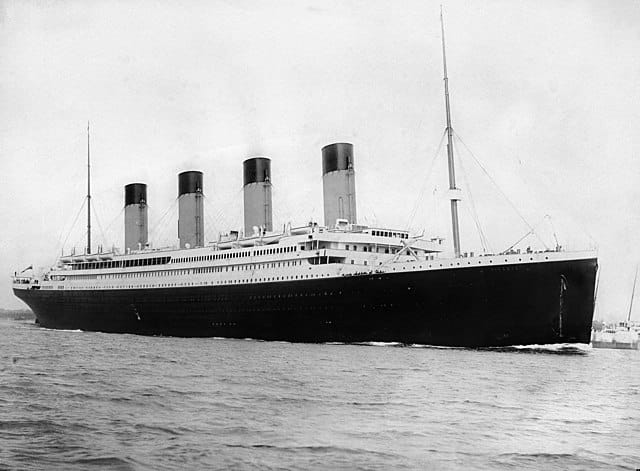
Source: Francis Godolphin Osbourne Stuart/ Wikimedia Commons
The ship stopped briefly in Cherbourg, France, before continuing its voyage to her destination in Queenstown, Ireland, and eventually New York. More passengers came on board and everyone was buzzing with excitement for the journey ahead.
The "Indestructible" Ship That Now Lies at the Bottom of the Ocean
Tragically, the vessel met its demise when it came into contact with a single iceberg and sunk. How deep is the Titanic wreck, exactly? The enormous ship and most of its passengers sank 12,500 feet to rest on the ocean floor.
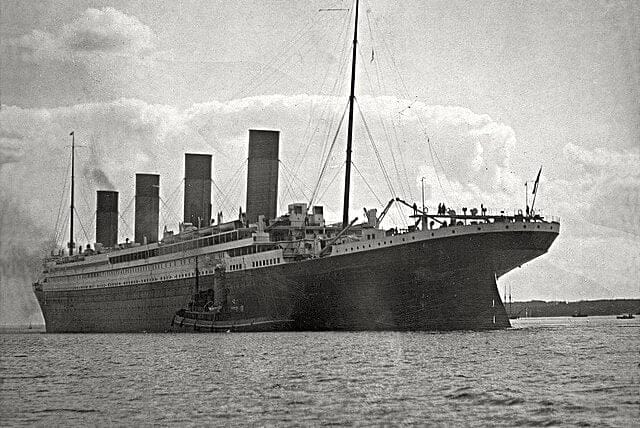
Source: Wikimedia Commons
More than 1,500 people lost their lives in this devastating crash. Despite being called “unsinkable,” the Titanic became known for its journey to the bottom of the ocean rather than its journey to its destination. Very few survived.
The Tragic Sinking of the Titanic
The water temperatures at the Titanic’s depth were below freezing. The Atlantic waters filled the many hallways and cabins of the ship. The supports began to give way, and there was irreparable damage to the ship’s structure.

Source: Wikimedia Commons
Crews might have been able to save the ship if the flooding hadn’t infiltrated the four bow sections of the ship. But when it did, there was little hope for the guests and crew aboard. The water invaded five of the ship’s compartments, and it took them right to the bottom of the ocean.
What Set the Titanic Apart?
The Titanic was one of three large vessels funded by a few wealthy business owners. The three Olympic-class Ocean Liners were the RMS Titanic, the Olympic, and the Britannic.

Source: Robert Welch/Wikimedia commons
Later, the Limiting Factor was the mini-sub that traveled to explore the wreckage left behind by the ship. Those in the submarine did not experience the tragic sinking of the Titanic, but they did discover something awfully troubling at the site of the wreck.
A Ship Like None Other
The Titanic came to be in a fascinating way. J. Bruce Ismay was the chairman of the White Star Line Company. He needed to find a way to make his ships stand out from the others available. The way he chose to do this was to offer a classy and lavish ride that would outshine all others.
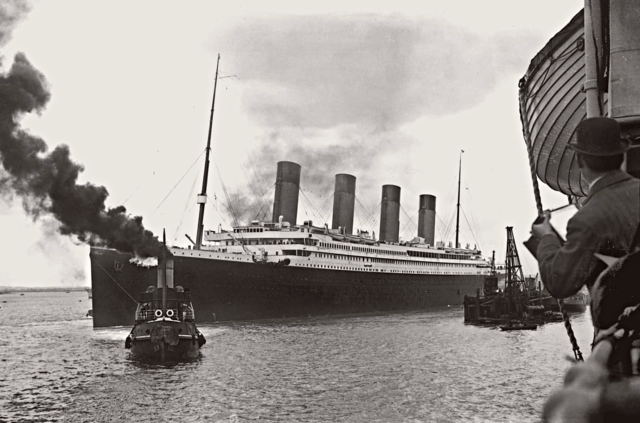
Source: Wikimedia Commons
The Olympic ships took longer to build than any other ship because of the intricacies and sheer sizes of the vessels. Everyone assumed that they were made of better quality due to the way they looked and how long it took to build the things! They would soon find out this wasn’t necessarily the case.
The "Unsinkable" Ship That Sank
The Titanic was impressive not only for its sheer size but for the impressive details all over the ship. Constructing the ship took years. In 1909, Harland and Wolf began the long journey of building the vessel.
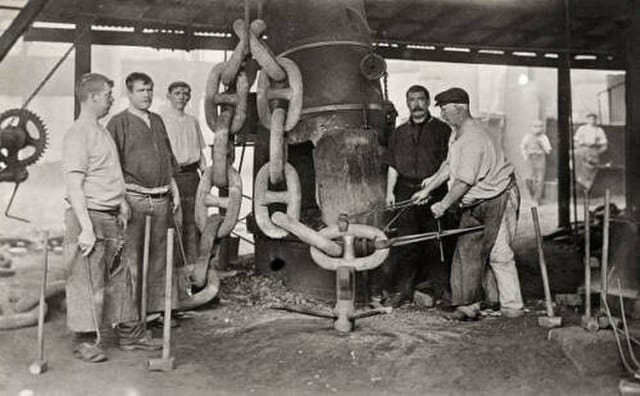
Source: Wikimedia Commons
The ship contained 2,000 steel plates, each weighing 3 tons! Working on this ship with such heavy objects was not easy, and it certainly wasn’t safe at the time. There were little to no safety procedures in place. By its completion, 246 employees reported injuries and eight people even lost their lives while working on the boat.
The Obvious Class Split on the Titanic
The ship had a class system. The most wealthy people were assigned to first-class cabins and were given the most lavish experience of anyone on the boat. They were served things like roasted duck, pâté de foie gras, and peaches in Chartreuse jelly. They also had a gym, pool, and Turkish bath to enjoy.
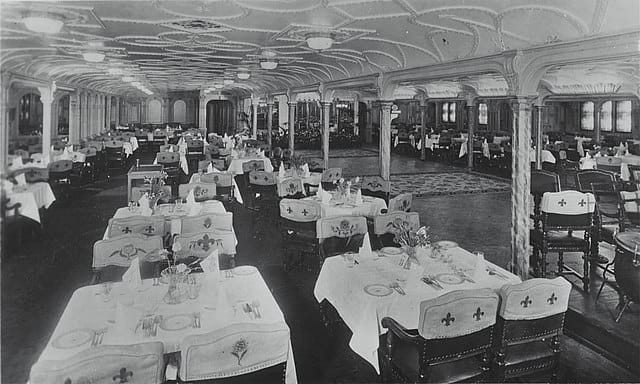
Source: Wikimedia Commons
The third-class passengers did not get to enjoy these fancy privileges. They were still granted a unique journey, nonetheless. Simple necessities such as heating and running water were treated like privileges.
An Enormous Ship
As a magnificently huge ship, the Titanic had some stunning dimensions and characteristics. With four huge propellers powered by 29 boilers, this ship weighed 52,310 tons! It measured about 175 feet from its bottom to its highest point and 880 feet from bow to stern.
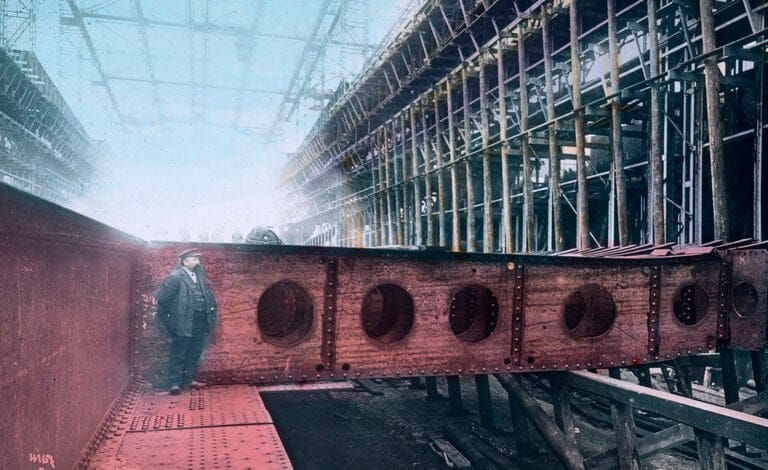
Source: Tumblr
Its dimensions are proof that it is more than just an unusual ship. This queen of the ocean accommodated around 1,355 passengers and 885 staff on its first and last voyage, making it a moving city on the waves.
Insufficient Lifeboats on the Titanic
The Titanic tragedy was an unforeseen event for both the passengers and the White Star Line company. Sixty-four wooden lifeboats were supposed to be available to accommodate the passengers and staff on board. The launching gear was there, but sadly, the lifeboats were not.
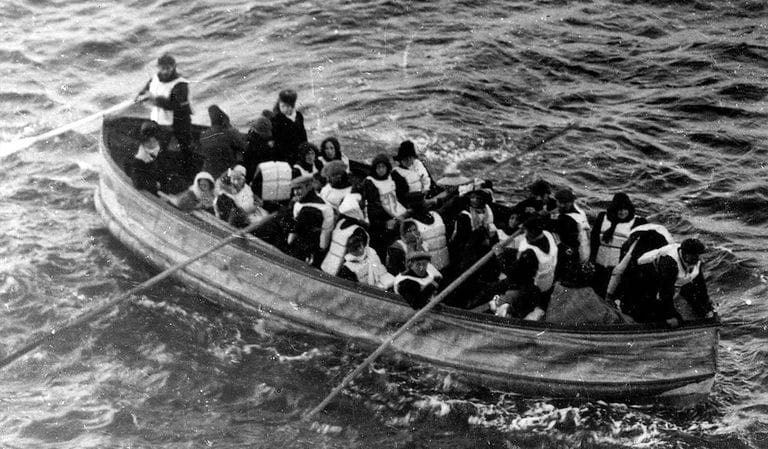
Source: Pikabu
Because no one had seen this tragedy coming, the ship only had 20 lifeboats on its maiden voyage—enough to hold 1,178 people. According to British Maritime Regulations at the time, ships weighing above 10,000 tons were obliged to load only 16 lifeboats, meaning that White Star Line company did not break any rules.
A Bad Omen?
The Titanic was launched on the River Lagan in Belfast, Ireland, on May 31, 1911. One hundred thousand people witnessed it become the largest human-made object to float on the water. With the help of 22 tons of soap and animal fat, the enormous ship slid into the river within 62 seconds!
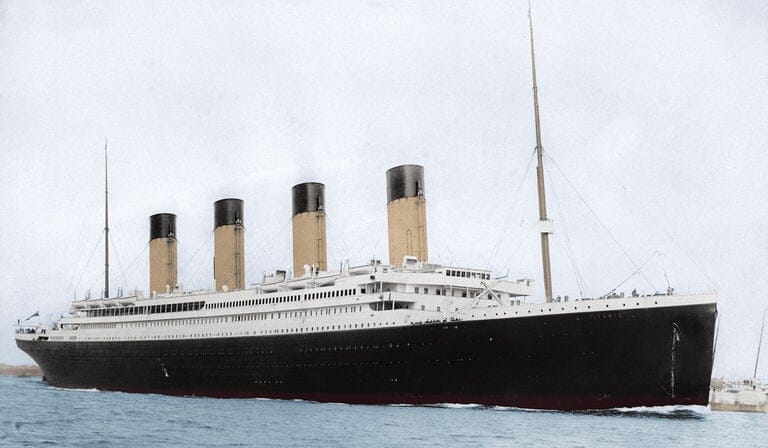
Source: Twitter
Right from the launch, tragedy was in the air. Shipwright James Dobbin was helping to take the timber supports away from the ship. Several heavy blocks of wood fell on him, and he died from his injuries two days after.
Final Touches to the Titanic
After sliding into the River Lagan, the ship had yet to set sail. However, the construction of the Titanic was nearing its end, with just a few interior designs left. This was the time when they added intricate details to the ship’s interior.
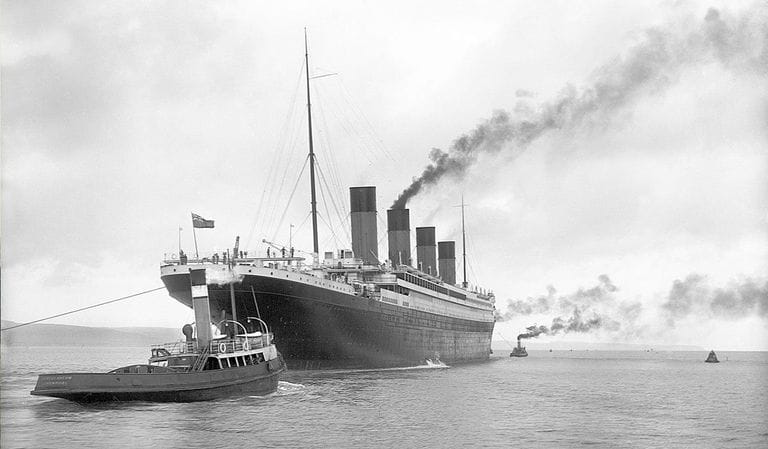
Source: Twitter
Aside from the interior design, the great four funnels were the final touches necessary for the ship’s safe sail. One funnel was responsible for the kitchen’s ventilation, and three others were for the fumes coming out of the ship’s engine.
Why Did They Think the Titanic Was Unsinkable?
To decide if it was ready to sail, they put the ship through trials in the Irish Sea for eight days, starting from April 2, 1912. As expected, the ship was deemed ocean-worthy and ready to embark on a historical voyage with thousands of passengers and crew on board.
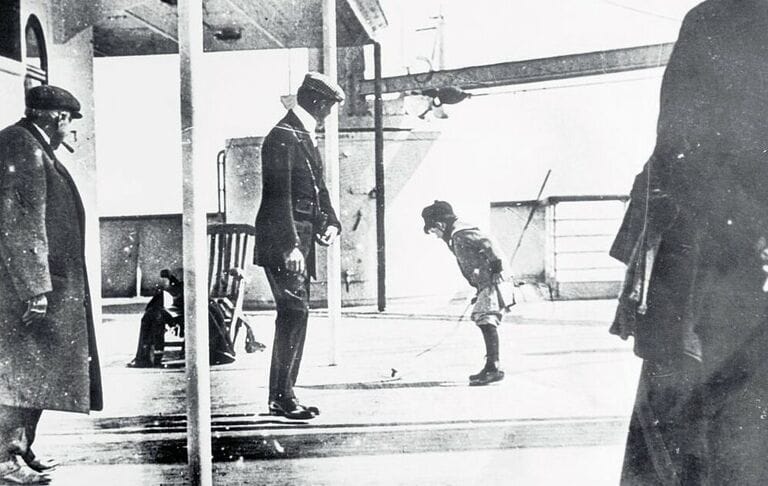
Source: Bettmann/Getty Images
The Port of Southampton was the ship’s point of origin. While sailing on the Eastern coast of America, it stopped briefly at Queenstown and Cherbourg to pick up additional passengers.
The People Behind the Titanic
Around 885 staff were on the maiden Titanic voyage. Sounds like a lot, right? Given the vast dimensions of the ship, it needed a large workforce to handle all the operations inside. Led by senior captain of White Star Line, Edward Smith, the Titanic was set for the most luxurious voyage.

Source: Carl Simon/United Archives/Universal Images Group/Getty Images
Sixty-six of them were on the deck, 325 were the ship engineers and their assistants, and the remaining 494 comprised chefs, cleaners, printers, fishmongers, laundrymen, and other crew responsible for treating guests to the finest on-board experience.
Passenger Numbers on the Titanic
The Titanic departed on its voyage, carrying a total of 1,317 paying passengers. They were men, women, and children of all ages, all hoping to have a once-in-a-lifetime experience. The overwhelming majority were in third class, with around 284 in second class and around 324 in first class.
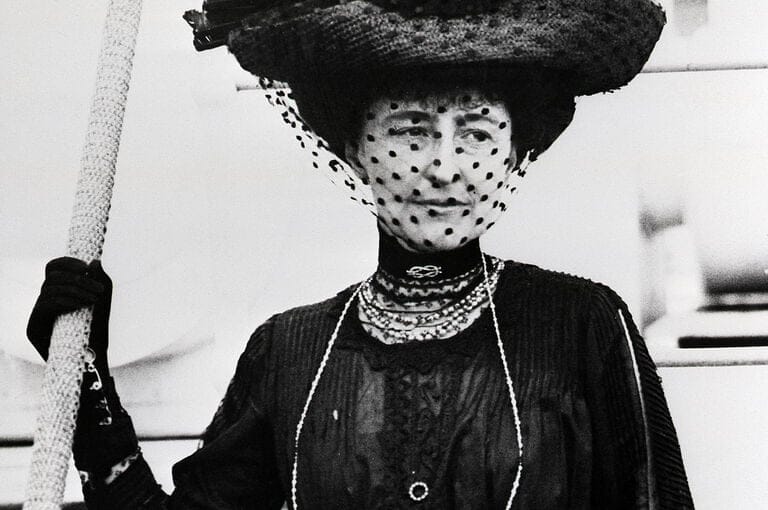
Source: Bettmann/Getty Images
While this seems like a large number, it was nothing compared to the ship’s intended capacity of 2,453 passengers! Why did places on the Titanic not sell out, given its fame and popularity?
Some Passengers Backed Out
Only 1,317 passengers joined the Titanic on its doomed maiden voyage. However, this was not the original number of people who were supposed to sail. Before the Titanic launched, there were debates and protests about the ship’s coal consumption in the U.K.
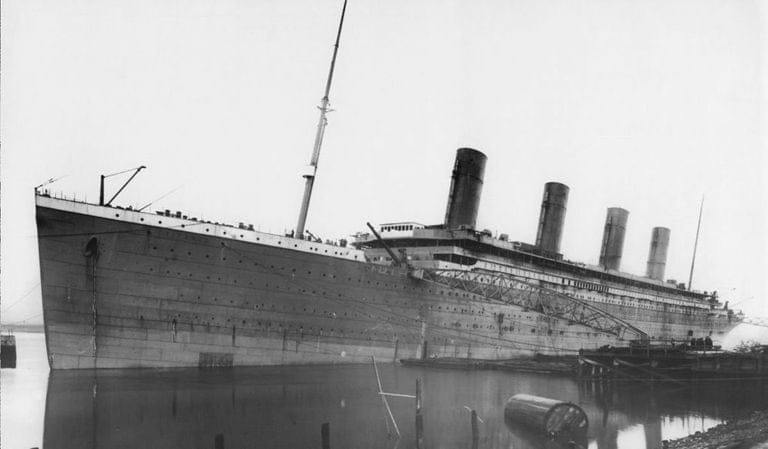
Source: Universal Images Group/Getty Images
Many travelers had a last-minute change of mind and canceled their plan to join the sought-after voyage. Nobody anticipated the tragedy, and many innocent lives were lost, including the richest people of that time.
A Remarkable Ship with Remarkable People
The ship was bathed in luxury and populated by some of the richest people in town. On the voyage with his wife, Madeleine, was the very wealthy John Jacob Astor IV. There was also Benjamin Guggenheim, an American tycoon, with his mistress Léontine Aubert and her maid, chauffeur, and butler.

Source: Universal Images Group/Getty Images
Leontine and Madeleine survived, but sadly, the others did not. Among the casualties were Macy’s department store owner, Isador Straus, and his wife, and Harry Molson, a Canadian politician and business owner.
Cowardice or Luck?
Bruce Ismay survived the freezing tragedy. How? He was able to join the others on the ship’s last wooden lifeboat. For this reason, he was called a coward. Was it cowardice or just his privileged luck? The owner of White Star—J.P. Morgan—was supposed to join the voyage but canceled his plans at the last minute. Lucky!

Source: Bettmann/Getty Images
For some, however, heroism comes naturally, and this was proved by Thomas Andrews, the Titanic‘s designer. He chose to help others, putting his life on the line to do so. As a result, he was among those who did not survive.
How Did the Titanic Hit the Iceberg?
At around 11:40 p.m. on April 14, 1912, a crewman named Frederick Fleet noticed an iceberg in the vessel’s path. The solution seems simple—steer the ship away—but there wasn’t enough time to correct course. The ship wasn’t able to avoid the iceberg collision, and the breached bow of the Titanic started to sink into the water.
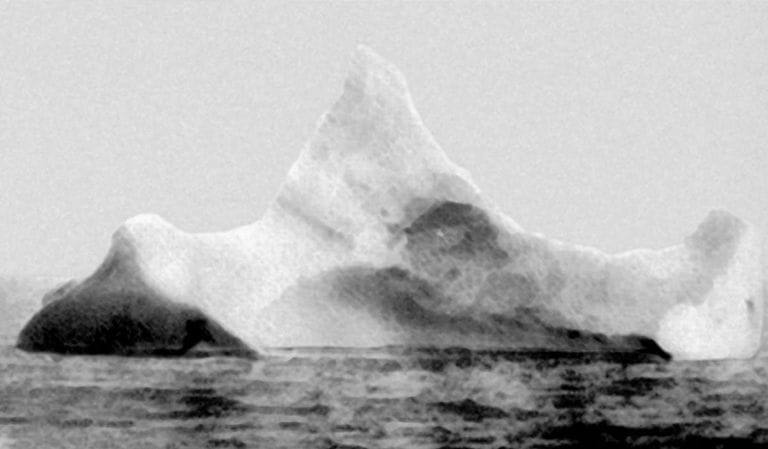
Source: Twitter
The whole ship was in turmoil, and nobody was guaranteed safety. None of the crew had dealt with a situation like this before, so no one knew quite how to respond.
How Did the “Unsinkable” Titanic Sink?
As the ship continued to plunge into the water, third-class passengers in the steerage were trapped inside, and many froze to death. At 2 a.m., the water flooded the ship’s deck, and in 10 minutes, the Titanic had gone into the depths of the ocean.
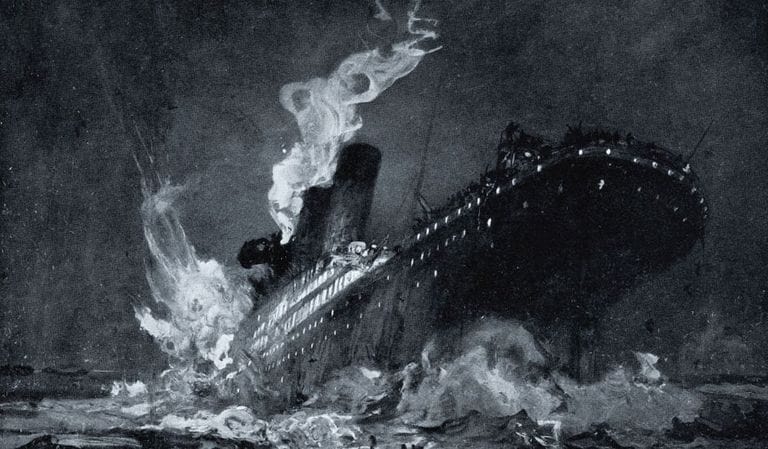
Source: Universal History Archive/Getty Images
It was an unexpected misadventure, and questions as to why this happened were quickly raised. Reports say that the ship was going faster than normal, while the captain, who sadly lost his life too, was not attentive enough to icebergs.
Ideas for Retrieval Operations at the Location of the Titanic Shipwreck
It was to the knowledge of everyone that many of the passengers belonged to the top class of society. Of course, with the benefit of wealth, their relatives were willing to fund a search operation to recover the casualties. The diving technology at the time was not advanced enough, but other ideas surfaced.
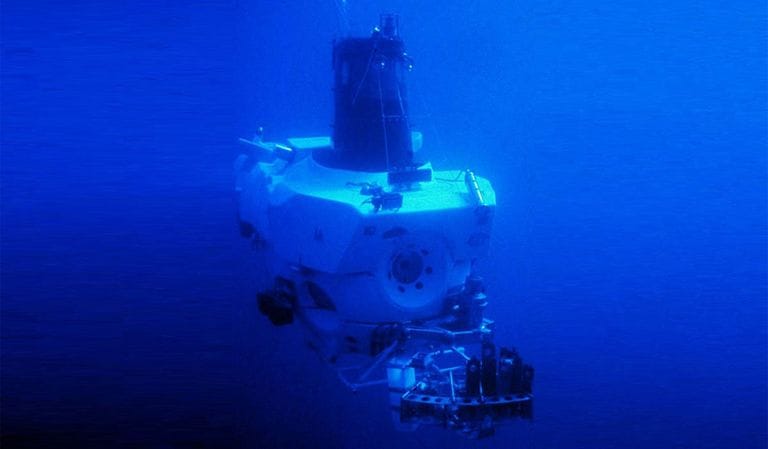
Source: Imgur
The dropping of bombs to make the bodies resurface was deemed impossible because nobody knew precisely where the Titanic wreck location was. Another idea that cropped up in the 1970s was to use a huge magnet to pull up the whole ship and use balloons to carry anything recovered from the Titanic after that.
Earliest Visit to the Titanic Wreck Location
So, who found the Titanic? Oceanographer Robert Ballard is credited for discovering the ship in 1985. Argo was the first sub ever controlled by a remote, and it was also the first to visit the Titanic wreckage 70 years after the sinking. As time passed and technology advanced, the remote control subs were replaced by manned subs.
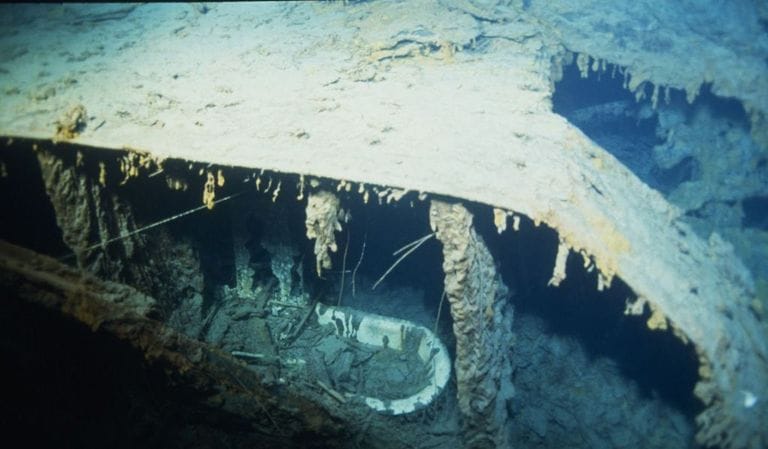
Source: Xavier DESMIER/Gamma-Rapho/Getty Images
At 12,500 feet, the Limiting Factor team was the first to see the once magnificent ship after the last Titanic expedition in 2005. They brought back some fascinating stories along with pictures in incredible 4K resolution. Another impressive thing they had brought off-shore was their haunting discovery.
The Limiting Factor Team
The August 2019 expedition was not a simple matter of dropping the sub 12,500 feet and then driving it around the ship. The Limiting Factor team included skilled divers and experts. After all, great discoveries require great people.
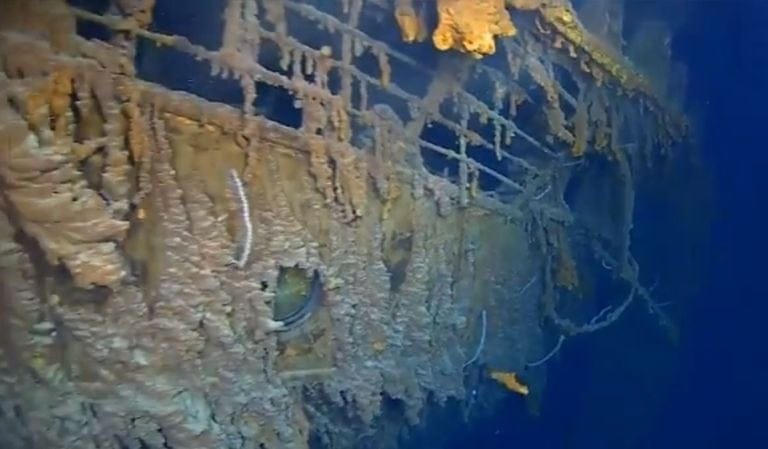
Source: SuperyachtNews/Twitter
The team had five divers, and Victor Vescovo—the founder and CEO of Caladan Oceanic—was one of the divers. Of course, the venture wouldn’t be complete if there were no experts on the team. Rob McCallum, the lead planner, and Parks Stephenson, the Titanic expert, completed the group.
The Fascinating Titanic Discovery
The stunning remains of the magnificent ship were filmed with cameras that exceeded the quality of any that had gone down before them. They discovered that the “captain’s bathtub,” a popular artifact spotted on previous missions, can no longer be seen at the location of the Titanic shipwreck. Why?
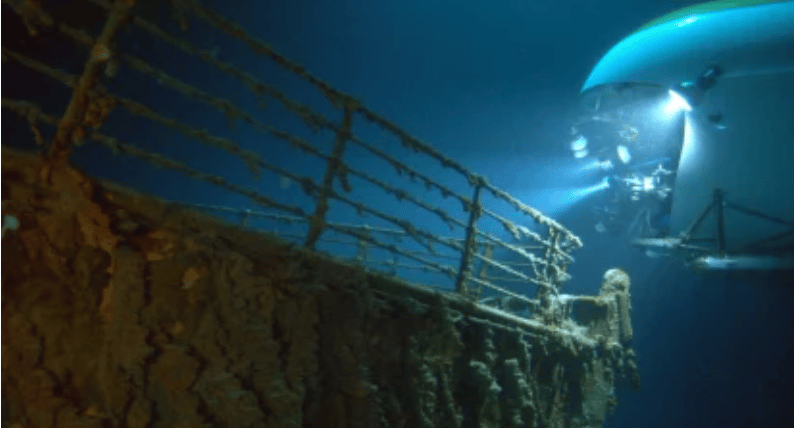
Source: Imgur
Crew member (and founder of Triton Submarines) Patrick Lahey mentioned in his statement that it was truly fascinating to see the once majestic vessel come into view in the murky depths. It is now home to a variety of marine species.
What Has Been Recovered from the Titanic?
Numerous artifacts have been recovered from the Titanic’s wreckage since its discovery, providing insights into the lives of those on board and the early 20th century. Personal effects like jewelry, clothing, and purses offer a personal connection to passengers and crew. Items reflecting the ship’s luxury, such as dinnerware and cutlery bearing the White Star Line logo, along with ship parts like hull pieces and deck fittings, have been brought to the surface.
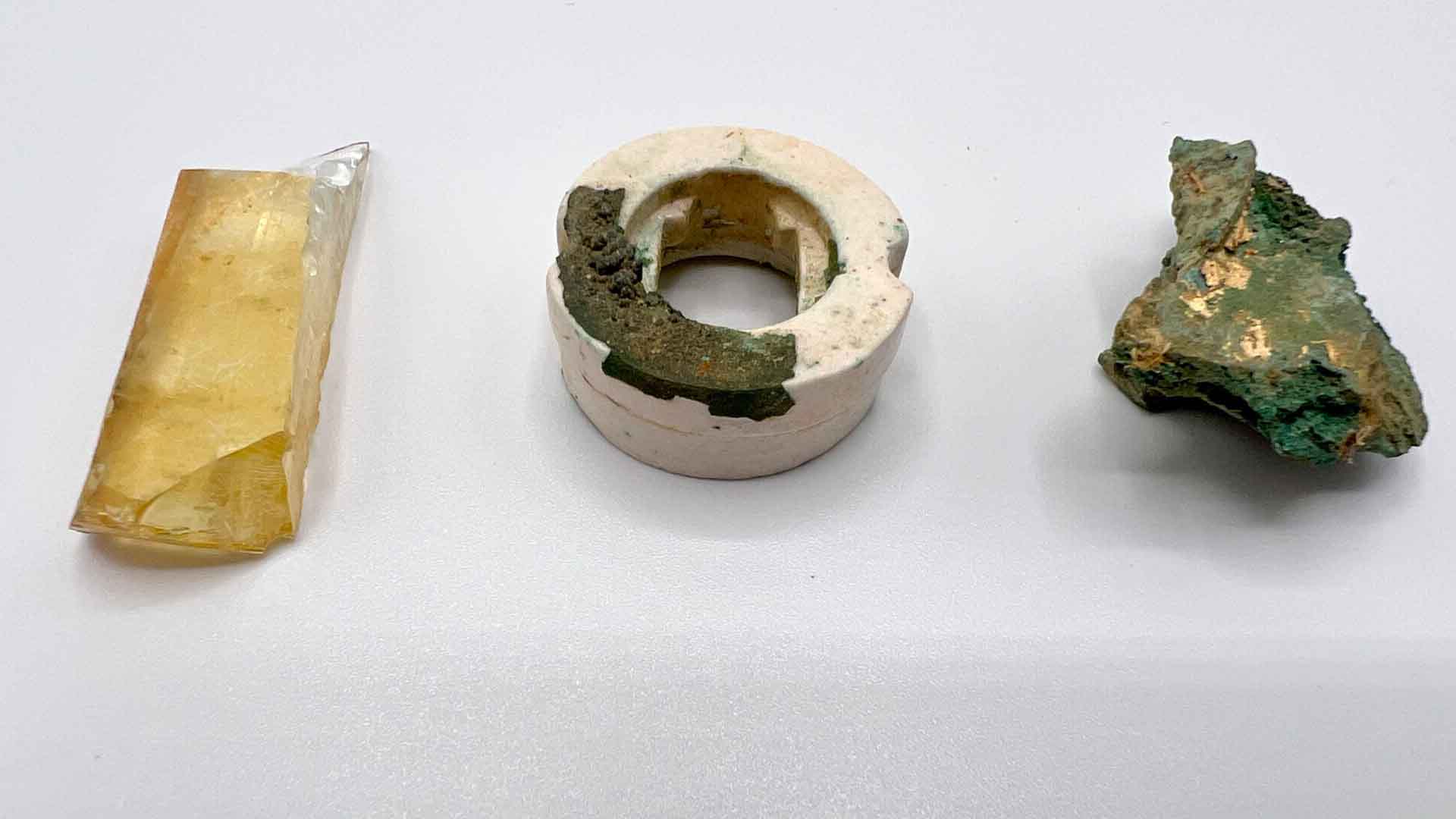
Source: Titanic Museum
Surprisingly, some paper items like letters and currency have also been preserved. Everyday objects, including toiletry kits and luggage, along with furniture and musical instruments like a violin, further paint a picture of life on the Titanic. These artifacts, now displayed in museums, serve as reminders of the ship’s voyage and tragic fate.
The Titanic Returns to Nature
After decades under the ocean exposed to saltwater, bacteria, and ocean creatures, “the Titanic is returning to nature,” as Parks Stephenson told the BBC in 2019.
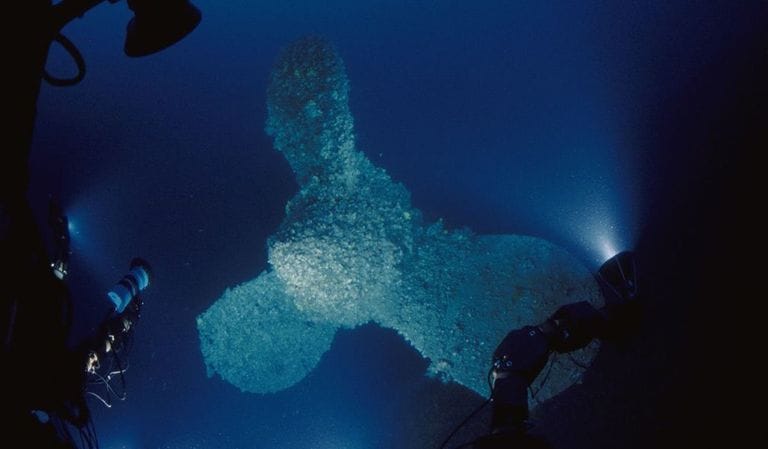
Source: Xavier DESMIER/Gamma-Rapho/Getty Images
Stephenson’s statement was backed by expedition scientist Clare Fitzsimmons. She explained that many artifacts were being eaten away by “rusticles”—bacteria that are eating up the steel structure of the ship. Unfortunately, rusticles turn into dust over time, and soon enough, the Titanic will just be a part of our memory.
What Is Happening to the Oil from the Titanic?
The Titanic could be a disaster for nature too. Like other ships, it needed a lot of oil, and if the remainder of this oil leaks out, marine life surrounding that wreckage could be hugely affected.
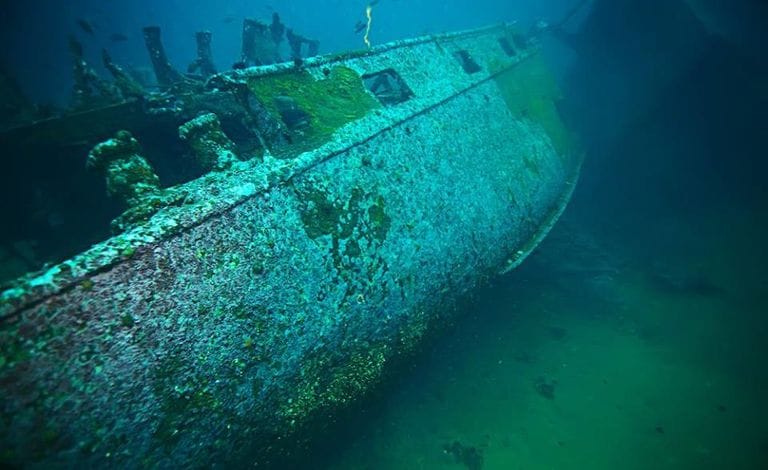
Source: Ota Veverka/Facebook
The Titanic is turning to dust, but its oil reserves are not. Scientists are now thinking of a solution to solve the inevitable oil leak that will occur when the Titanic erodes more. Accelerated by being soaked underwater, this could happen at any time within the next few years. Where is the Titanic wreckage on a map, though, that will see the impact? The ship rests nearly 400 miles off the coast of Newfoundland, Canada. The specific Titaniclocation coordinates are 41°43′32″N 49°56′49″W. It just so happens that it’s nearby another important shipwreck.
Sunken Ships Harm Marine Life
Another ship in a similar predicament has captured the attention of scientists—that ship is a German vessel called the Franken. It was meant to be a cargo ship, but due to the high demand for U-boats at the height of World War II, construction of the Franken was delayed for two years.
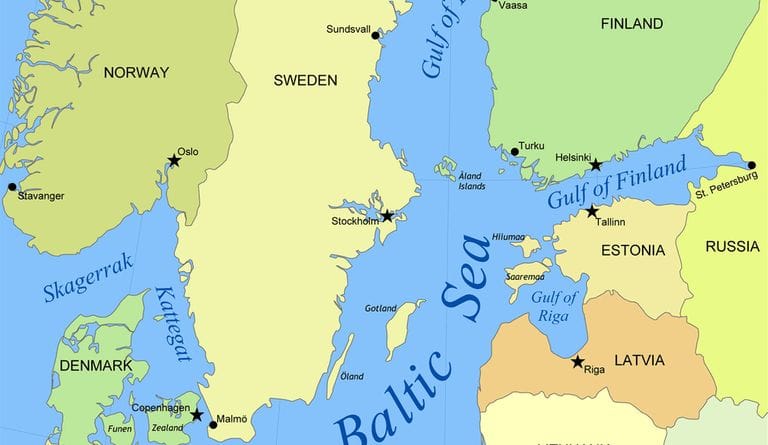
Source: Twitter
With the Nazis having invaded Denmark, the Germans had to move the Franken to Burmeister and Wain shipbuilders, a business based in the Danish capital of Copenhagen, where the ship saw its completion.
A Vessel to Support the War
In March 1942, the Franken received its commission and became an oil tanker and a carrier of supplies for some of the German Navy’s ships. It was finally finished after a few years of delays, and it got to work without a moment’s delay.
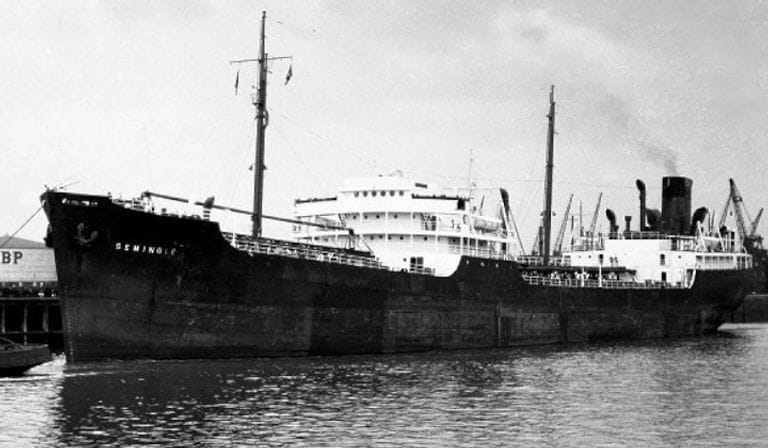
Source: Tumblr
The Franken supplied German ships like the Prince Eugen, a heavy cruiser battleship operated by the German Navy. It also serviced the utility ships that served as minesweepers and torpedo boats, delivering fuel and supplies.
The Franken Towing Service
Another interesting fact is that the Franken was among five Dithmarschen tankers and supply ships built by the Germans. They were built to support naval warfare vessels, and they carried munitions and much-needed supplies.

Source: Steche/Getty Images
The Franken was more than just a cargo ship. It could also tow ships that were badly damaged, bringing them to safety. This included everything from warships and destroyers to the small vessels used by the Germans as they fought the Russians.
One “Hel” of a Trip
With the war still raging on, the Franken sailed from two ports. One was in He—a small town on the Hel Peninsula in Poland. The Germans renamed the place “Hela” following their invasion.
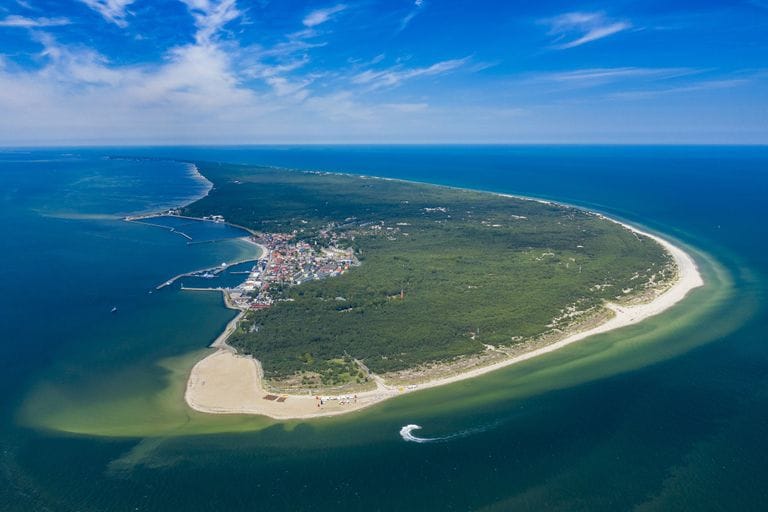
Source: mariusz_prusaczyk/Getty Images
Hel was one of the last stands Poland made against the German takeover. 3,000 Polish soldiers stood their ground here before succumbing to Nazi tyranny. The Germans blasted the peninsula with torpedoes just before the Polish surrendered, turning it into an island.
Men of Courage Stood Their Ground
Even after the loss of the peninsula, Polish soldiers continued to fight for their country. In fact, they fought off the Nazis for almost a week before eventually giving up. It was a valiant effort, but the Nazis sadly overpowered them in the end.
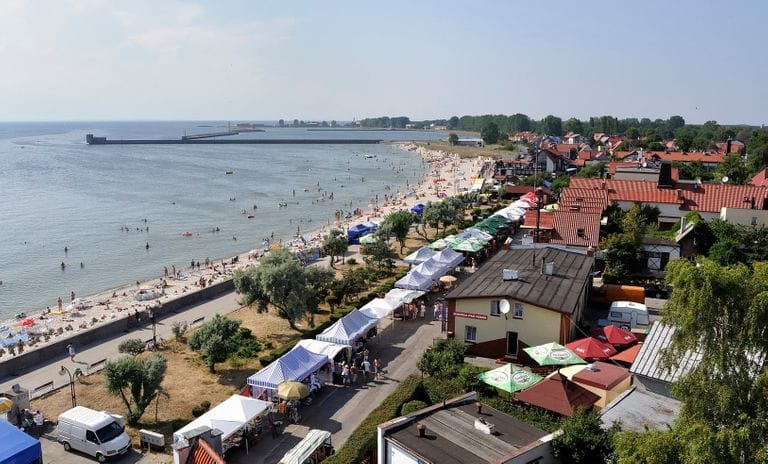
Source: Wikimedia Commons
The German occupation of Hel was a strategic one. They used the beautiful seaside town as a base for training the crewmen who operated their U-boats. Hel had the conditions the Germans needed, so they saw their invasion as crucial. After all, controlling a U-boat isn’t the easiest thing in the world. Plenty of training is needed.
The Beginning of the End for the Nazis
The Franken sailed from two ports, with one situated near the port of Hel. Gdyni was a quiet port before the German occupation. Not much has happened there, and it was of no great interest to anyone. Still, the Germans insisted on renaming it “Gotenhafen.”
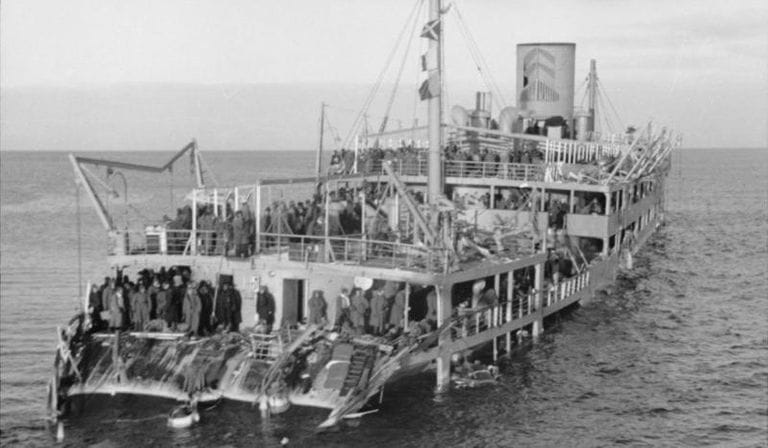
Source: Pikabu
With all the chaos going on, the Baltic Sea became one of the most prominent locations of World War II. The USSR—often referred to back then as the “Red Army”—dominated the Nazis, pushing them away from Russia and the other Baltic countries.
Running Won’t Save You
The Russians intercepted the fleeing Germans with their submarines and aerial weapons. This was possible because the Soviets had invaded countries the Germans thought they had their grasp. It was a huge blow against the Germans and could well be one of the major reasons they lost the war.
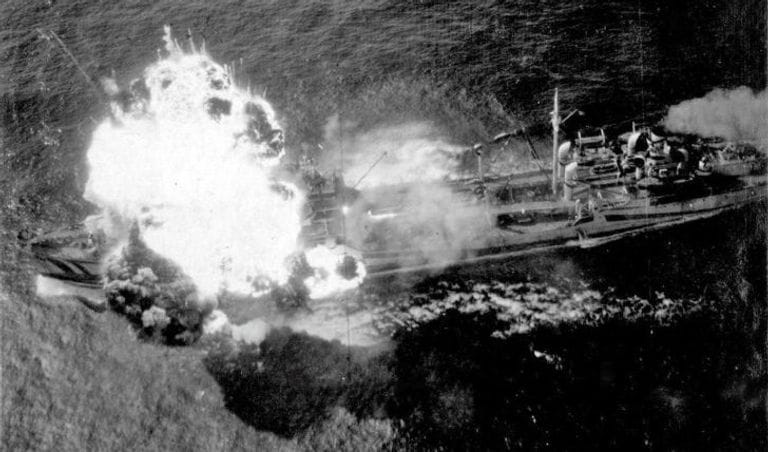
Source: Pikabu
The German Navy was left with the single option of evacuating its soldiers and civilians using Estonian waters. As they traversed these waters, they were bombed by Russian aerial war vehicles while torpedoes were launched from submarines deep under the ocean.
Was Sinking the Franken a Huge Mistake?
Following a series of German losses to the Russians came the bombing of the Franken tanker. On April 8, 1945, the Franken met its end at the port of Hel. It was taken down by a Russian aerial assault on the location.

Source: Twitter
The Franken misfortune was devastating for the crew members and their families. Forty-eight sailors died as the Franken sank under the force of the bombing. It came to rest on the bottom of the Baltic Sea.
The Danger Is Yet to Come
Weeks following these events, on May 7, the Nazis announced their surrender. This meant that the war was finally over. However, the results were devastating as multiple vessels were sunk in the Baltic Sea. In total, they lost 30 U-boats, three German Destroyers, and one Russian destroyer, to be precise.
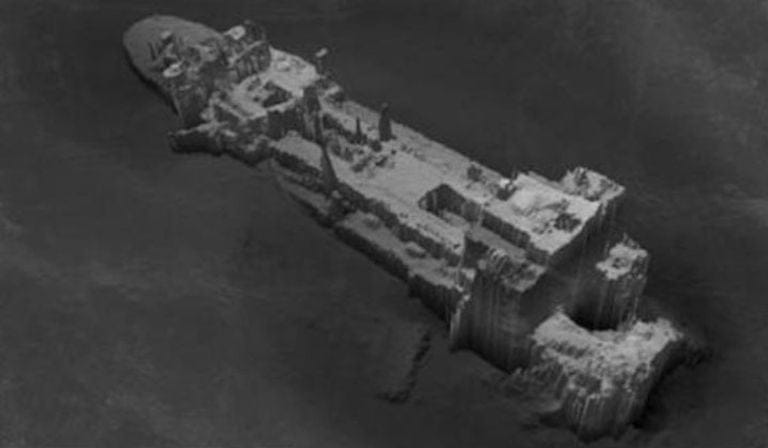
Source: Tumblr
After everything settled, people forgot about these merchant vessels. They were left to lie in peace at the bottom of the Baltic Sea for decades. But today, experts are extremely bothered by the threat these ships pose.
The Depths of the Baltic Sea
It is no surprise that after years of resting at depths of 160 to 250 feet in the waters of the Baltic Sea, the sunken Franken was already disintegrating. The Titanic bow now rests around 2,600 feet away from the other parts of the shipwreck. Germany’s Baltic Sea Conservation Foundation sent an expedition to check on the ship’s current state.
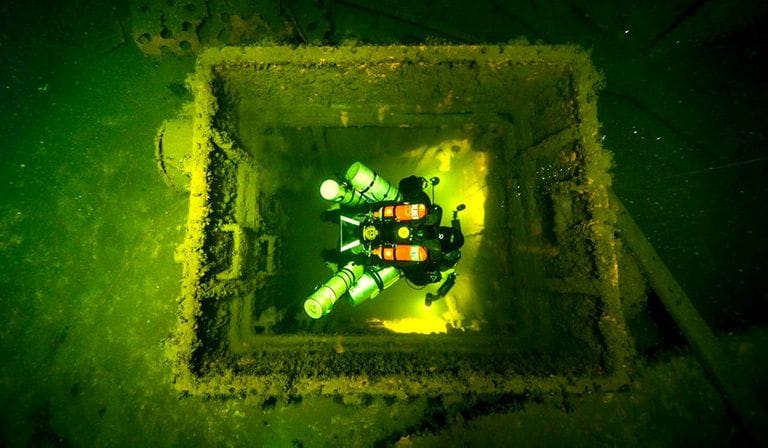
Source: Fundacja MARE/Facebook
In April 2018, the Literal and the Imor — both Polish dive vessels — dove down for a lengthy 13-hour exploration to get to know and understand the structure of the Franken.
Saltwater and Fuel Tanks Are a Bad Combination
For almost 75 years, the Franken has resided at the bottom of the Baltic Sea. What could possibly go wrong? As mentioned, saltwater plays a big role in the disintegration of sunken ships. When exposed to saltwater, tanks have a degrading rate of 0.39 inches every decade.
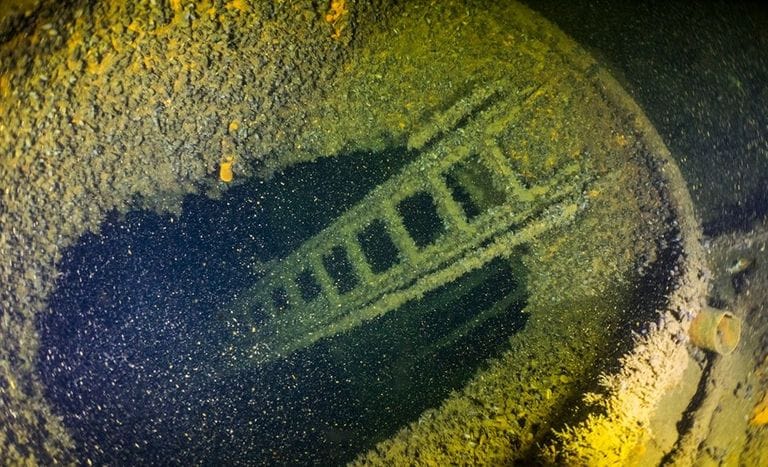
Source: Fundacja MARE/Facebook
For the Franken, this is not good news. The tank walls were, by best estimates, around half an inch thick, and by now, its tanks have likely deteriorated more than a quarter of an inch. Can you imagine how near it is to collapse?
Why Are Experts Worried About the Collapse of the Franken?
Remember, the Franken is not just an ordinary ship, but a cargo ship from World War II. After the Russians bombed the ship, extensive fuel remained inside as it sank to the bottom of the Baltic Sea. Today, the ship is said to be still carrying 800,000 gallons of fuel, at the very least.
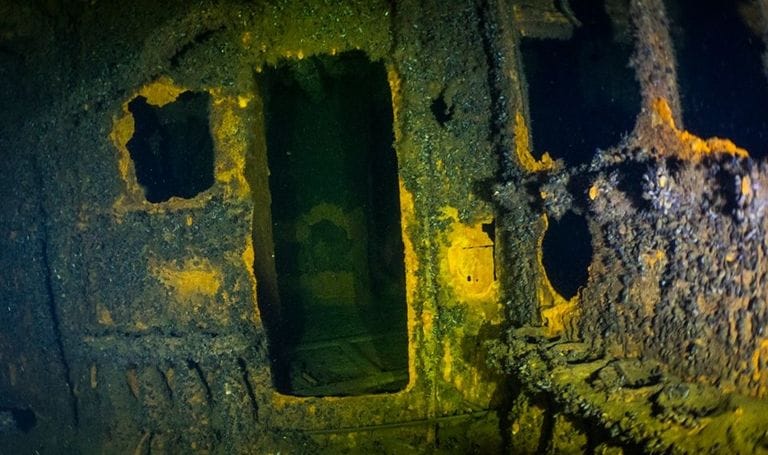
Source: Fundacja MARE/Facebook
Considering the possible harm it may bring, why did they not take action before the situation got worse? The answer was simple: Retrieving the ship would cost too much money while offering little to no return of value.
Take Action or Suffer the Consequences?
After World War II, the Franken was in the Polish government’s custody. In April 2019, Benedykt Hac from the Gdańsk’s Maritime Institute talked with Deutsche Welle. In their conversation, he emphasized how expensive it would be for the Polish government to raise the Franken. He gave a rough estimate of $9 million to $23 million if the retrieval operation happens today.
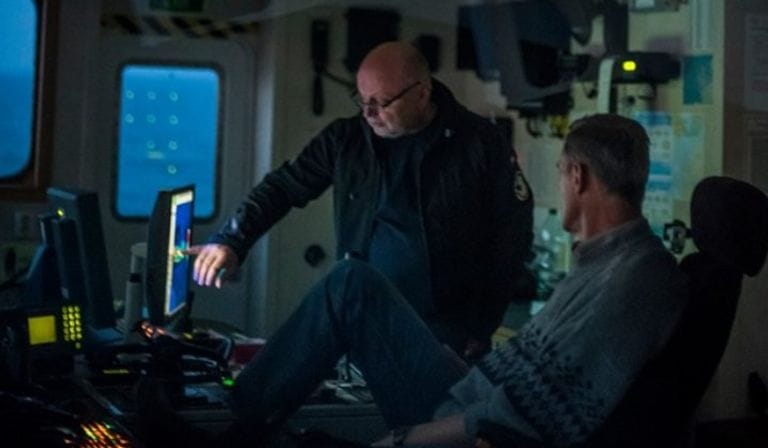
Source: Fundacja MARE/Facebook
That certainly isn’t cheap! Nor will this expenditure have any appreciable financial benefit for the government or any businesses involved. However, it would be of great value to environmentalists, scientists, and locals. In this case, which value should everyone consider?
The Effect of the Sunken Fuel Tanks
Without a doubt, when the Franken fuel load spills into the Baltic Sea, the whole region will suffer the consequences. Marine life will likely perish when this happens.
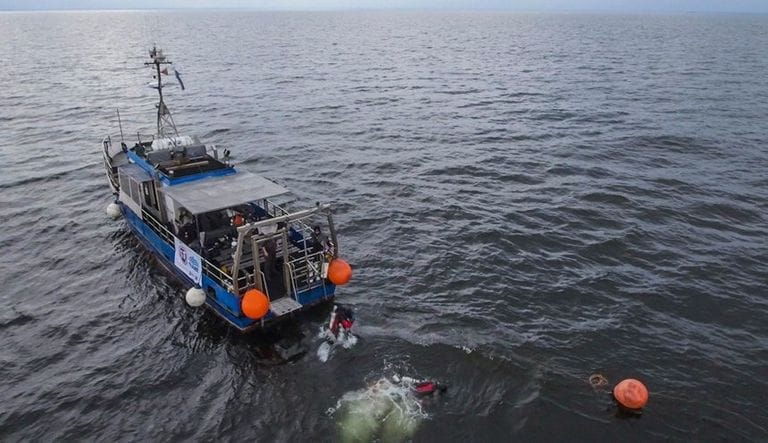
Source: Fundacja MARE/Facebook
If it is light fuel, it will quickly get into the bays and beaches, which will cause a great disadvantage to the Baltic region’s tourism industry. If this happens, the whole region will be closed and will suffer serious economic issues. With sunken ships like the Titanic and Franken, there are still many decisions left to be made in order to avoid the environmental threats these ships pose to our marine life.
Where Is the Titanic Wreckage on a Map?
The wreckage of the RMS Titanic lies in the North Atlantic Ocean, approximately 370 miles southeast of the coast of Newfoundland, Canada. It is located at a depth of about 12,500 feet.
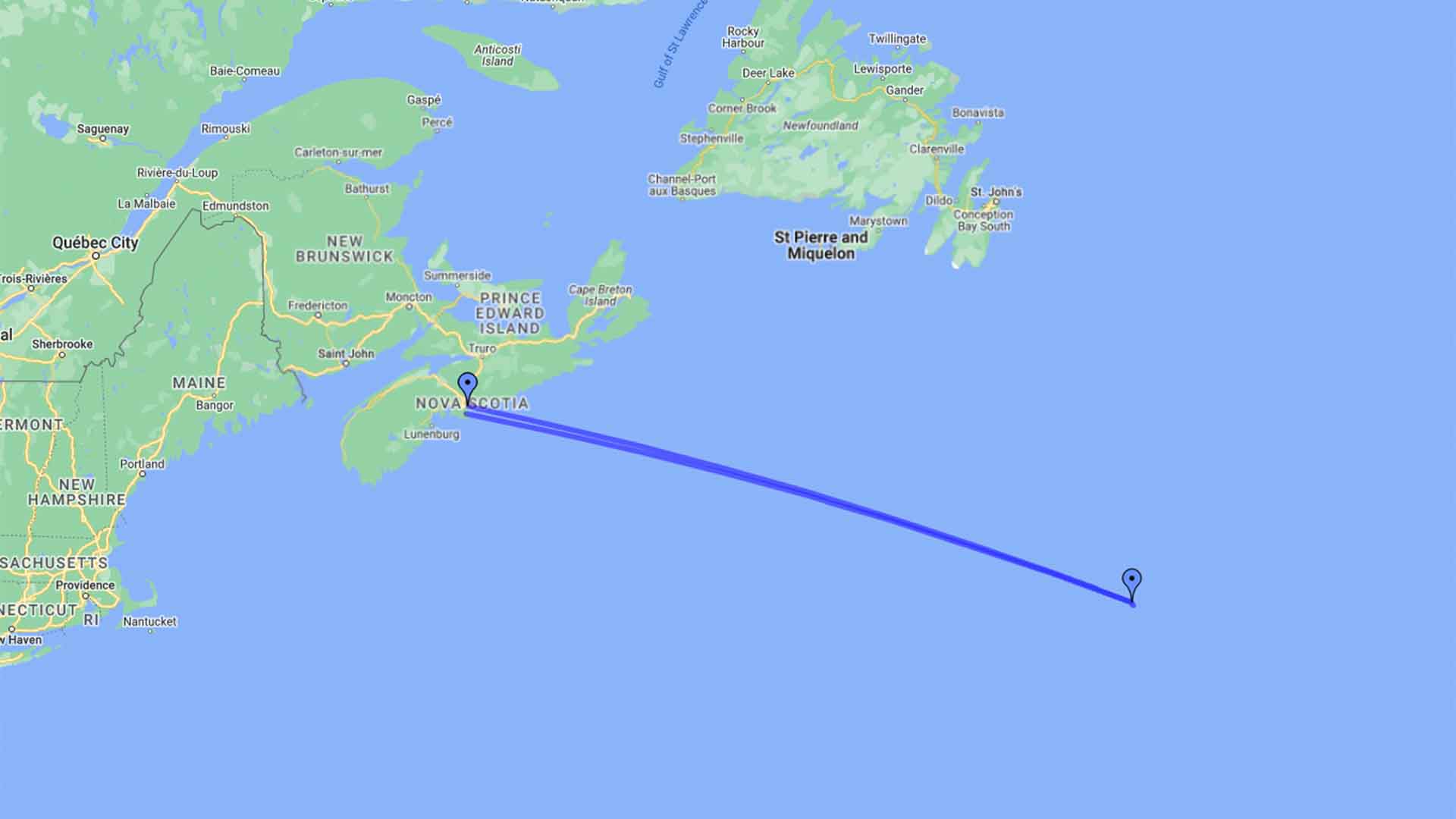
Source: D Grant/Google Maps
The exact coordinates of the Titanic’s final resting place are approximately 41.72693° N latitude and -49.94825° W longitude. This location places the wreck directly on the seabed, far from any landmass, in an area known for its deep waters and challenging underwater terrain.
Yet Another Titanic Expedition
One would think that the interest in the Titanic, which sank as far back as 1912, would wane with time, especially given the fact of how deep underwater the Titanic is. However, this is not the case, as 111 years later, expeditions to explore the Titanic wreck location are still being considered.
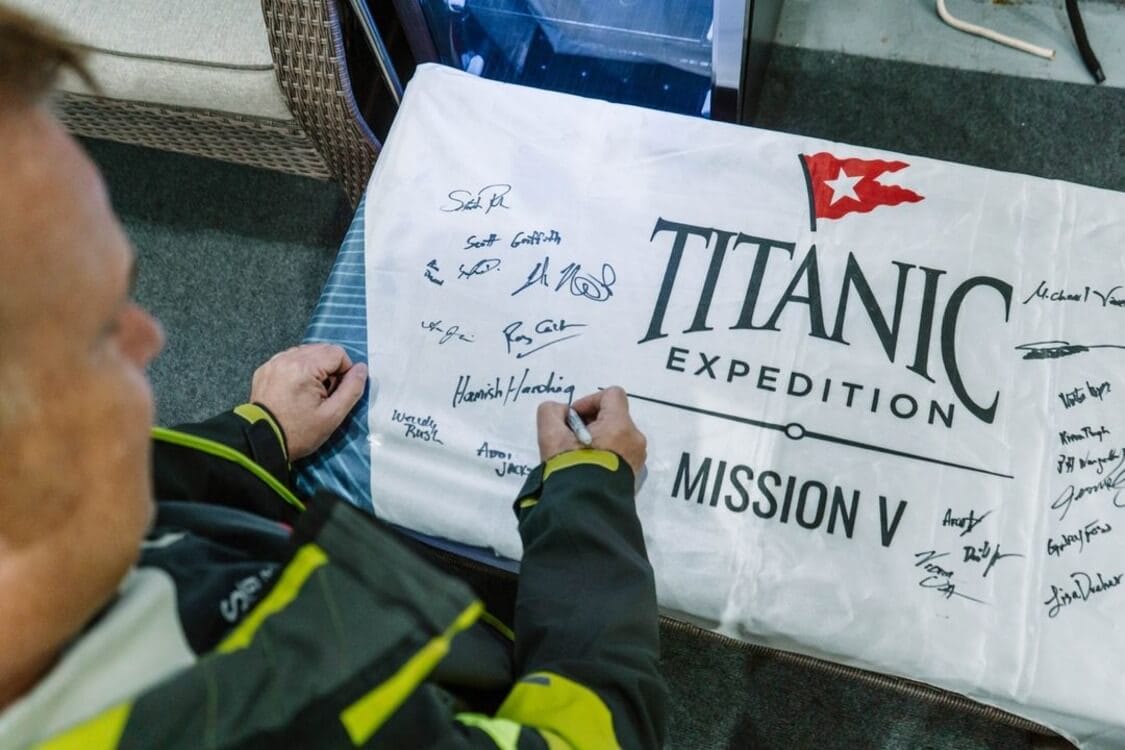
Source: actionaviationchairman/Instagram
In mid-2023, global audiences were drawn to the news of a planned Titanic adventure on the Titan submersible operated by OceanGate Incorporated. OceanGate Inc. is a privately owned, Washington-based company that focuses on providing crewed submersibles for various purposes, including exploration, tourism, and research.
A Voyage of the Billionaires
Just like the Titanic, the passengers on the 2023 Titanic Expedition included some of the world’s richest men. One of them, a UAE-based British billionaire, Hamish Harding, took to social media to announce how proud he was to partake in his adventure.
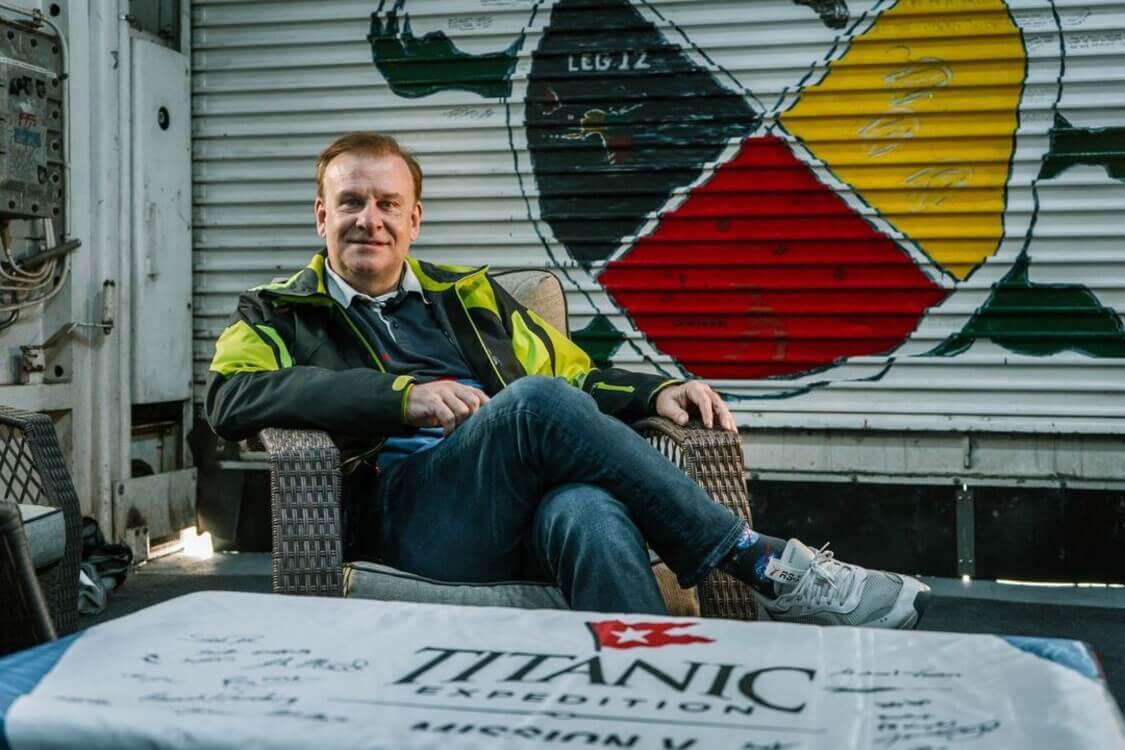
Source: actionaviationchairman/Instagram
“Due to the worst winter in Newfoundland in 40 years, this mission is likely to be the first and only manned mission to the Titanic in 2023,” he wrote (via Reuters). Others who boarded the submersible include Stockton Rush (OceanGate’s CEO), French diver Paul-Henri Nargeolet, Pakistani business owner Shahzada Dawood, and Suleman Dawood, his teenage son.
About the Titan Submersible
OceanGate’s Titan was a five-passenger, minivan-sized, 22-foot-long submarine that purportedly could dive up to 13,000 feet, according to Reuters. The submersible was operated by one button and featured a porthole that allowed explorers onboard to view the wreckage of the Titanic.

Source: Disaster Stories/ YouTube
“Titan is lighter in weight and more cost-efficient to mobilize than any other deep diving submersible. A combination of groundbreaking engineering and off-the-shelf technology gives Titan a unique advantage over other deep-diving subs,” OceanGate’s website read (via Entrepreneur).
A Catastrophic Ending for Titan
An expedition that was supposed to last eight days was brought to an abrupt end as it lost contact with its support ship less than two hours into its journey under the sea. Sadly, all hope that the missing Titan would be found with the passengers alive was lost when OceanGate released a statement days after the vessel’s disappearance.
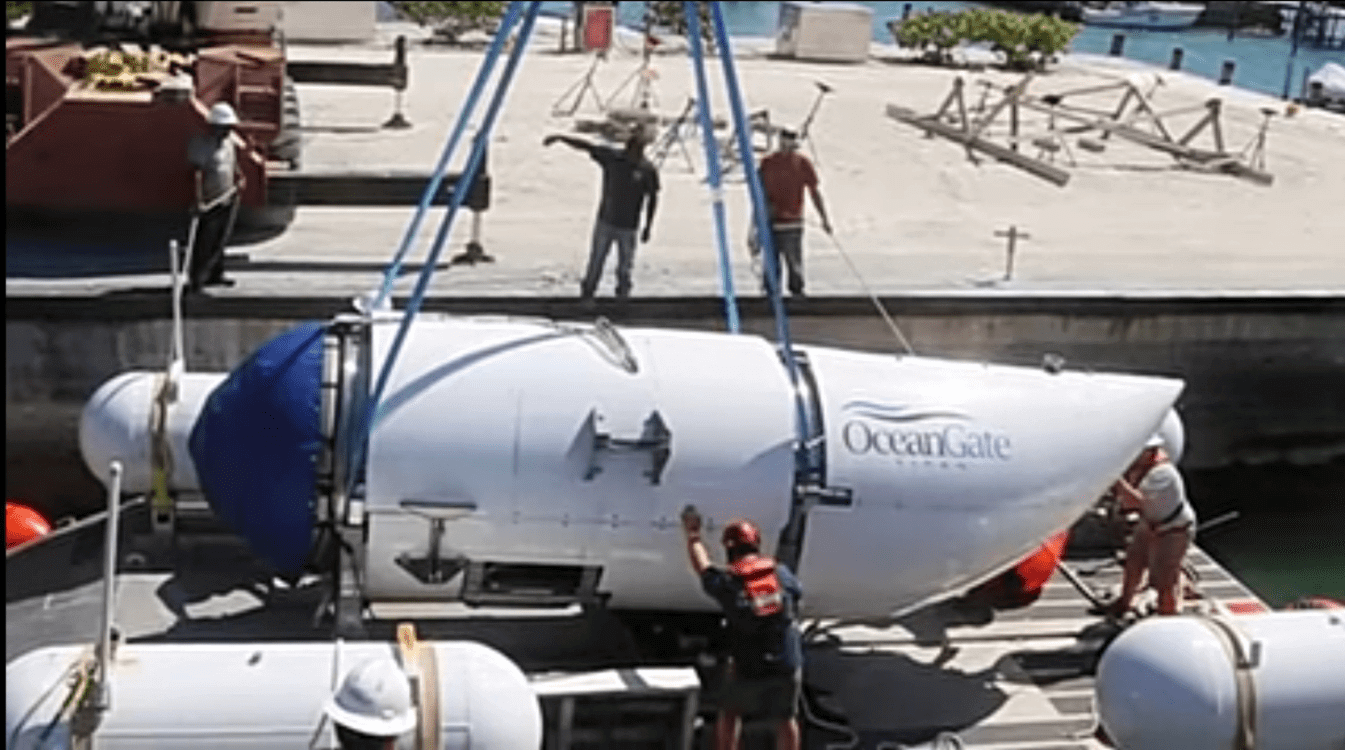
Source: Disaster Stories/YouTube
“We now believe that our CEO Stockton Rush, Shahzada Dawood and his son Suleman Dawood, Hamish Harding, and Paul-Henri Nargeolet, have sadly been lost,” the statement read (via CNN). The reports have it that the lost submersible suffered a catastrophic implosion due to pressure buildup in the vessel.
The Unforgiving Waters
As one can expect, there have been numerous reactions to the implosion of the submersible. Some people are of the view that the OceanGate vessel was doomed to fail from the beginning. According to them, the billionaires disregarded safety concerns and went ahead to embark on the journey knowing the risks involved.
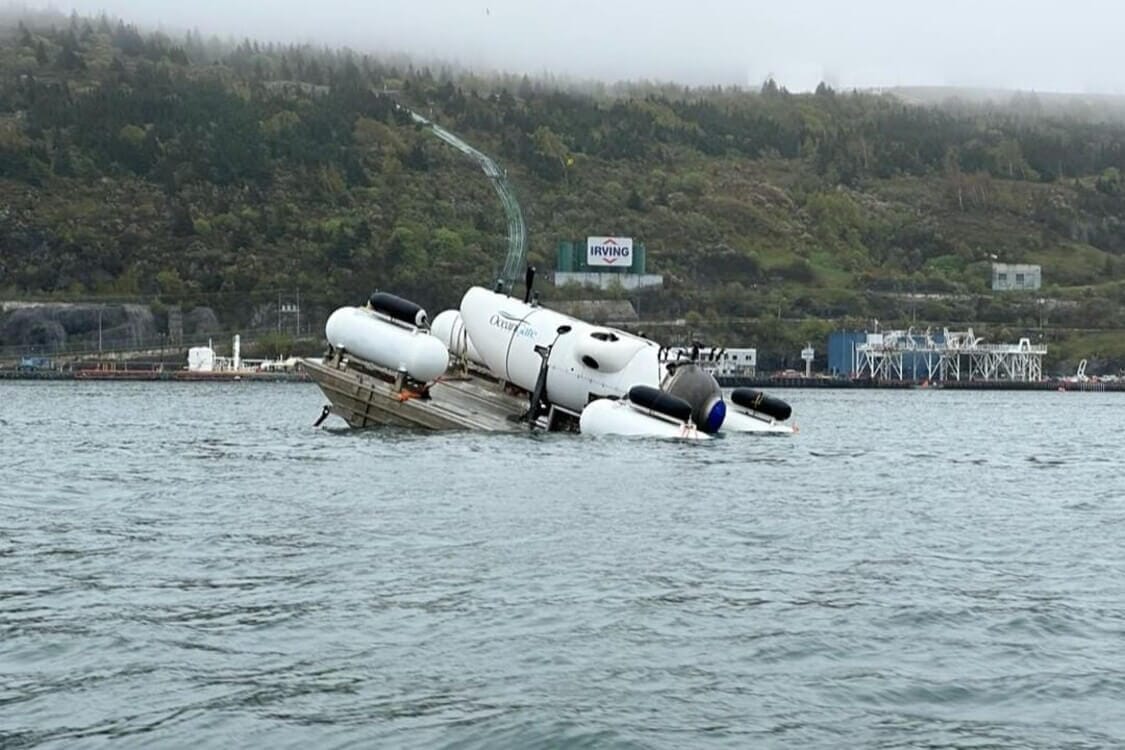
Source: actionaviationchairman/Instagram
Another school of thought has used the opportunity to remind everyone of the unforgiving nature of the ocean. According to them, this is a sign that expeditions to the Titanic are nothing but extremely expensive death traps.
